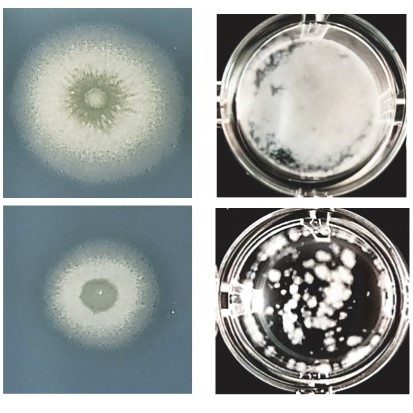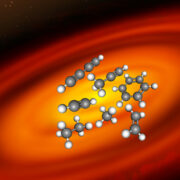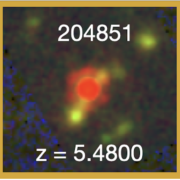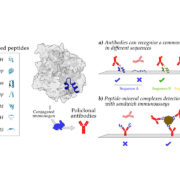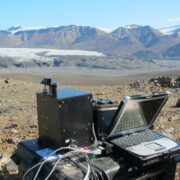Discovery of a bacterial mechanism to increase their virulence and resistance: a new target for treatment of infections.
Bacteria mainly live forming complex communities, such as biofilms, which are clusters of bacteria attached to each other and to a surface. This way of life makes them very resistant, and makes them difficult to eliminate when they colonise and contaminate the surfaces of medical devices such as catheters, or industrial food equipment and facilities, pipelines, etc. The problem is even greater when biofilms are formed by pathogenic species that pose a health risk. It is therefore important to understand how bacteria control their ability to form communities.
In a groundbreaking study of a research team led by Dr. José Eduardo González-Pastor from the Centro de Astrobiología (CAB), CSIC-INTA, it has been discovered that most bacterial species use the same general regulatory mechanism to control biofilm formation, in addition to virulence, and resistance to certain stress conditions in bacteria. The discovery of this mechanism allows a better understanding of the process of formation of bacterial communities, the control of virulence and adaptation to extreme conditions, and also opens new ways to prevent the formation of microbial communities and the treatment of infections.
This work has been published in the journal Nucleic Acids Research and is titled “tRNA queuosine modification is involved in biofilm formation and virulence in bacteria”. Specifically, they have shown that the genes required for biofilm formation and virulence are coordinated by the molecule queuosine (Q) in most bacterial species. Q, produced by bacteria, is used by the cell to modify some of the molecules responsible for the incorporation of amino acids into proteins, the transfer RNAs (tRNAs). These Q-modified molecules would be responsible for increasing the expression of genes that are enriched in a certain “NAU” sequence (“Q-genes”), which have been predicted by bioinformatics in most bacterial species.
This research group is specialized in the study of the molecular strategies that allow microorganisms to adapt to extreme conditions, of relevance in Astrobiology to understand how life could adapt on other planetary bodies. In previous studies by this group they observed that an increase in Q biosynthesis in cells was related to greater resistance to certain conditions (heat shock, acid pH, UV radiation, perchlorate and arsenic). In this study, they have shown that Q has a significant effect on biofilm formation and virulence in many different bacterial species, including pathogens, representing a novel general regulatory mechanism for the control of these biological processes. Until now, the regulatory mechanisms described for these processes were specific to some bacterial groups, but not common to most species. Therefore, these discoveries will make it possible to prevent and combat problems related to biofilms and bacterial infections produced by a wide range of species.
Dr. González-Pastor commented on the importance of these findings: “Most bacterial species live in multicellular communities, such as biofilms, in which cells are attached to each other by a matrix of extracellular polymeric compounds, providing them with enhanced resistance and survival against environmental changes and predators. These microbial communities are relevant in the development of chronic infections, as well as in the contamination of medical devices such as catheters, and industrial equipment and facilities (pipes, etc.) that end up unusable. Similarly, bacterial virulence (the ability of bacteria to cause disease) represents a major threat to public health. Therefore, our findings allow us to propose a new target for the development of treatments against bacterial infections and problems related to biofilm formation based on the inhibition of Q production and tRNA Q-modification”.
The implications of this research extend beyond bacterial infections and biofilm formation, as researcher Jorge Díaz-Rullo states: “We propose that in the context of microbiomes (microbial communities) the bacteria that inhabit them can be classified into two types based on their ability or inability to produce Q: “Q-sources”, bacteria that produce Q; and “Q-sinks”, bacteria that need Q but do not produce it and have to take it from outside, mainly from “Q-source” bacteria. Imbalances between Q-source and Q-sink populations in microbial communities, such as the human gut microbiome, could lead to alterations in the functionality of these communities”. Indeed, the findings of these researchers showed that microbiome-related diseases, such as inflammatory bowel disease (IBD) or colorectal cancer (CRC), are associated with an enrichment of “Q-source” bacteria and a decrease in “Q-sink” bacteria. This insight offers a novel perspective on microbiome dysbiosis and its potential impact on human health.
Furthermore, this study reveals a new strategy used by bacteria to adapt to extreme conditions, which could be used to improve the resistance of organisms that are part of Life Support Systems, relevant for space exploration.
For more information on the study, see the article titled “tRNA queuosine modification is involved in biofilm formation and virulence in bacteria”, published in the journal Nucleic Acids Research [DOI: 10.1093/nar/gkad667].






